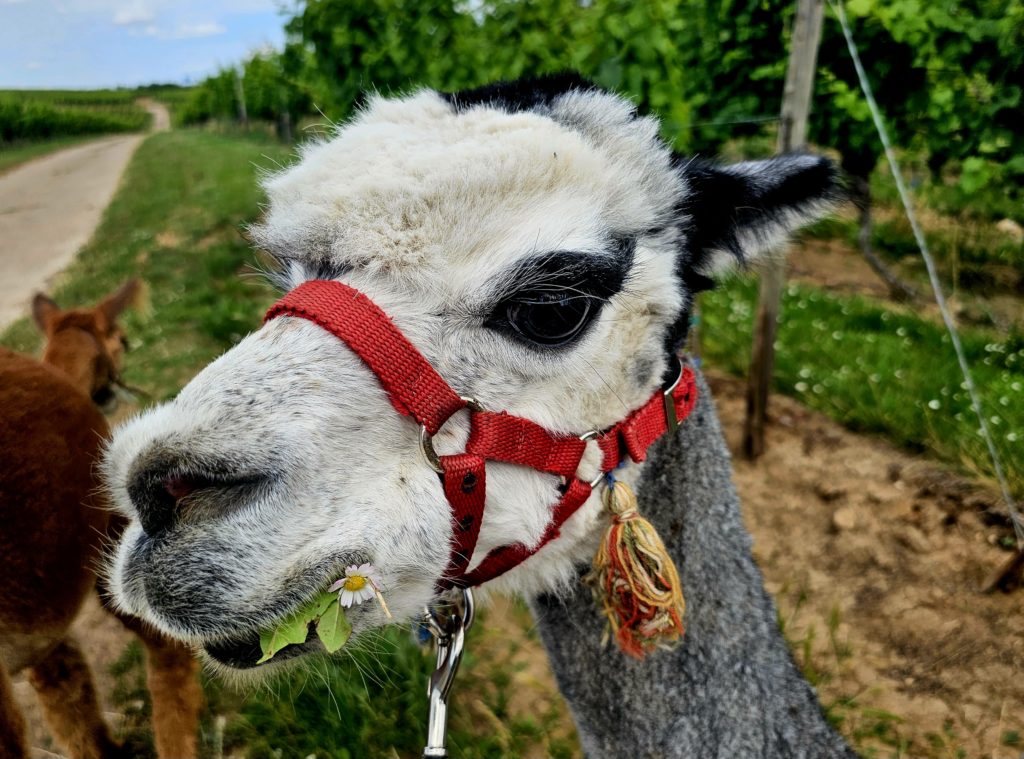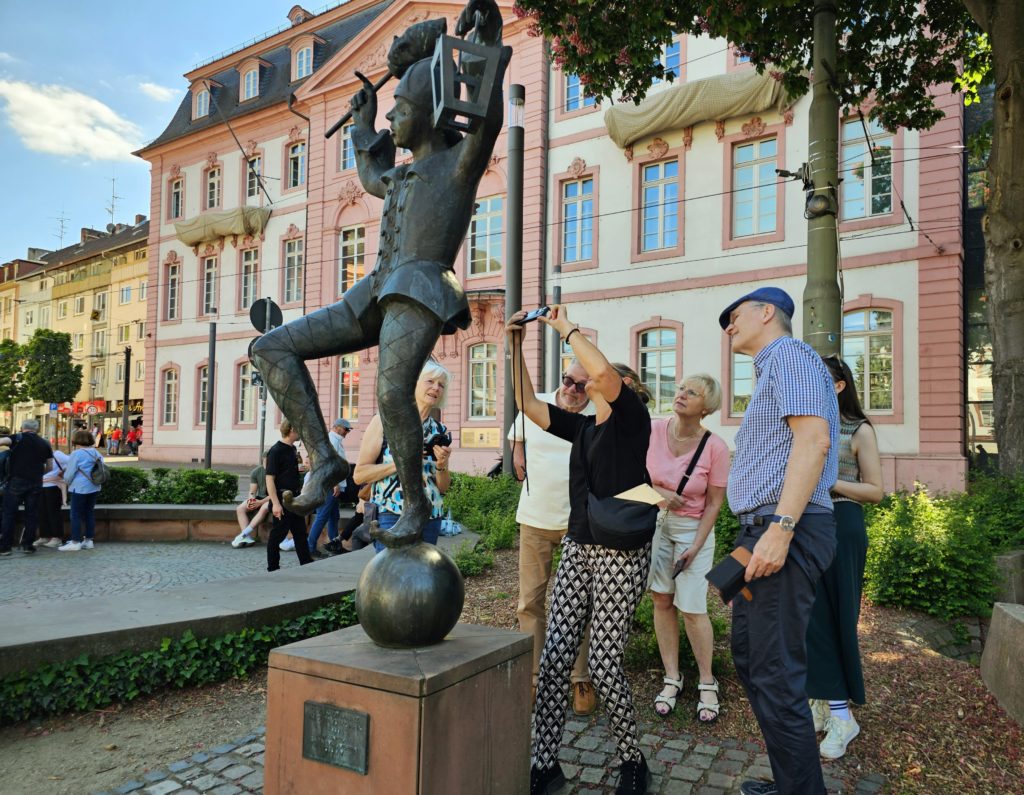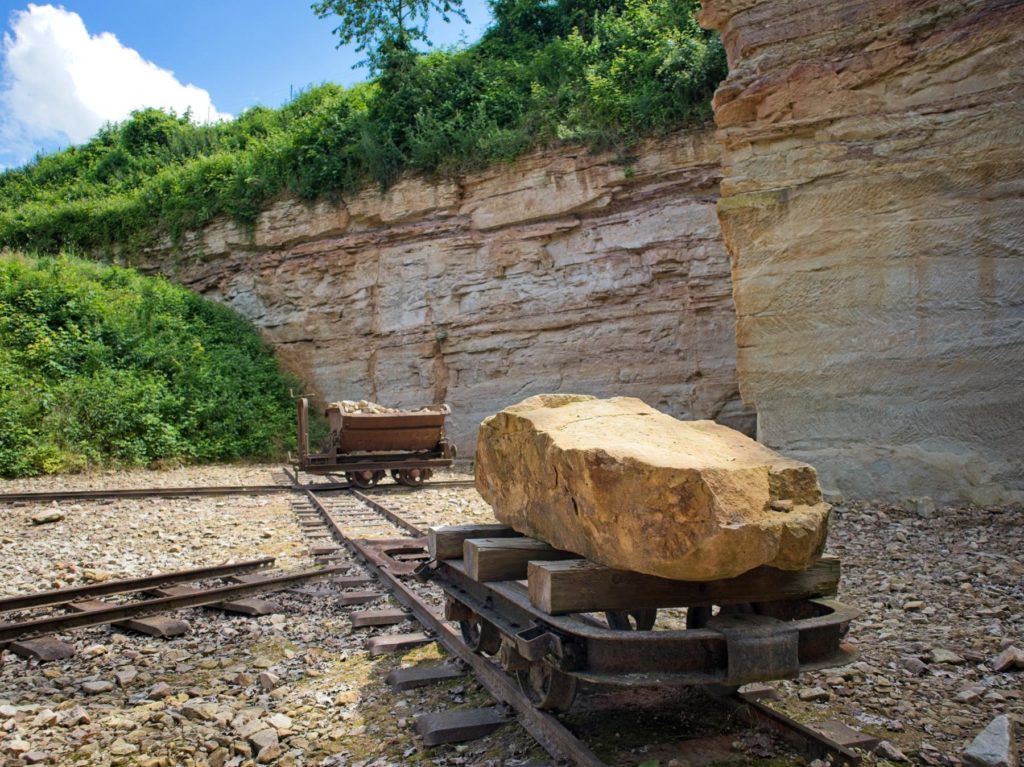Petrified witnesses of prehistoric times; bicycles in everyday life, sport and art; dolls that make us laugh today as they did in the past: All this is brought to us by some extraordinary Museums in Rheinhessen closer. They are well worth a visit, and not just on a rainy day. They offer an entertaining way to see and marvel, but also to hear, touch and participate. This is made possible by the many volunteers who work hard to keep the museums alive. Find out more from Marina Noble.
Time capsules of 500 million years of the earth's history: Nierstein Paleontological Museum
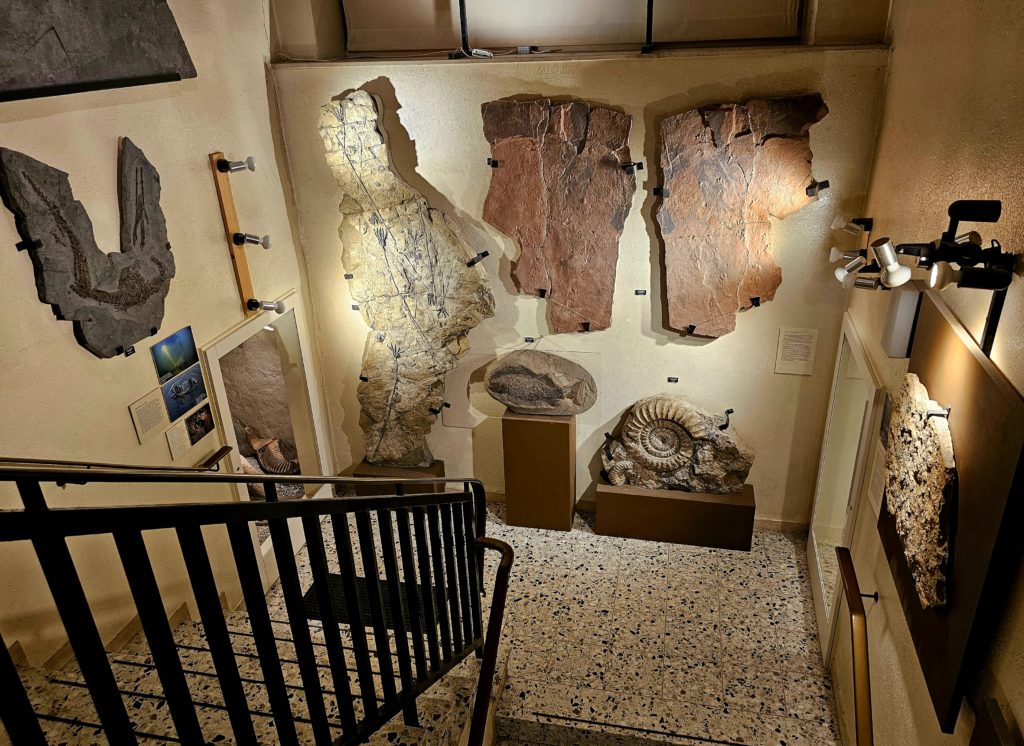
On a journey more than 500 million years into the past the Paleontological Museum in Nierstein with its extensive collection of fossils. Museum director Harald Stapf describes the treasures in over 50 display cases and on the walls as "time capsules". Because they hold traces that animals or plants left behind in the mud an unimaginably long time ago. Time has frozen them as snapshots of that time. Visitors can view them today - practically like photographs: Millimeter tiny or over two meters mighty like the fish dinosaur or a complete manatee skeleton.
How many exhibits are there? Instead of giving an answer, Harald Stapf takes us to the Mainz Schneckenstein. This alone consists of countless small fossils. The large size of the collection is deliberately not exhibited in a reduced form, because "we want to show the enormous variety of species and forms and encourage visitors to think about what used to be". An expert is always on hand to answer questions. For example, how the fossils are prepared from the surrounding rock.
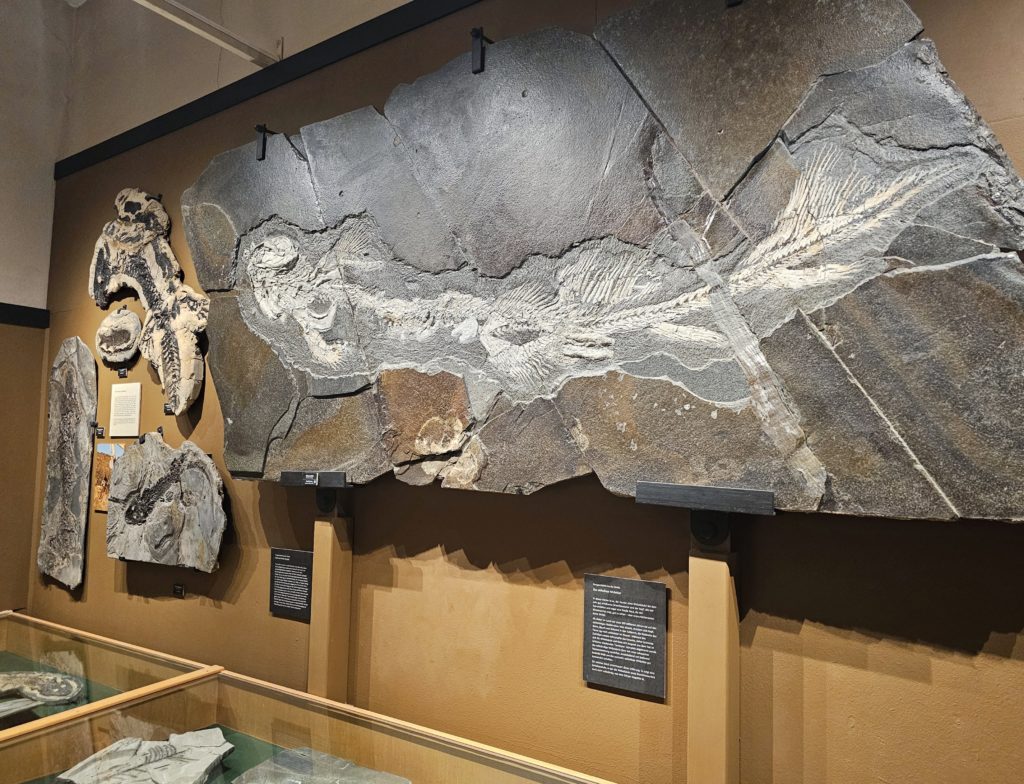
One room is dedicated to finds from the sand pits in the Mainz Basin, which was once covered by a sea. On display here are fish, shells, sea urchins, corals, snails with exciting names such as "elephant tooth snail", but also prehistoric pigs and elephants or rhinoceroses, which made their home here at that time. Harald Stapf is particularly proud of the teeth of giant tooth sharks, which are around ten centimetres long and are among the largest of their kind. Flamingos in Oppenheim? They did exist, as a bone find proves. Scorpions in Nierstein? Fossilized traces prove their existence.
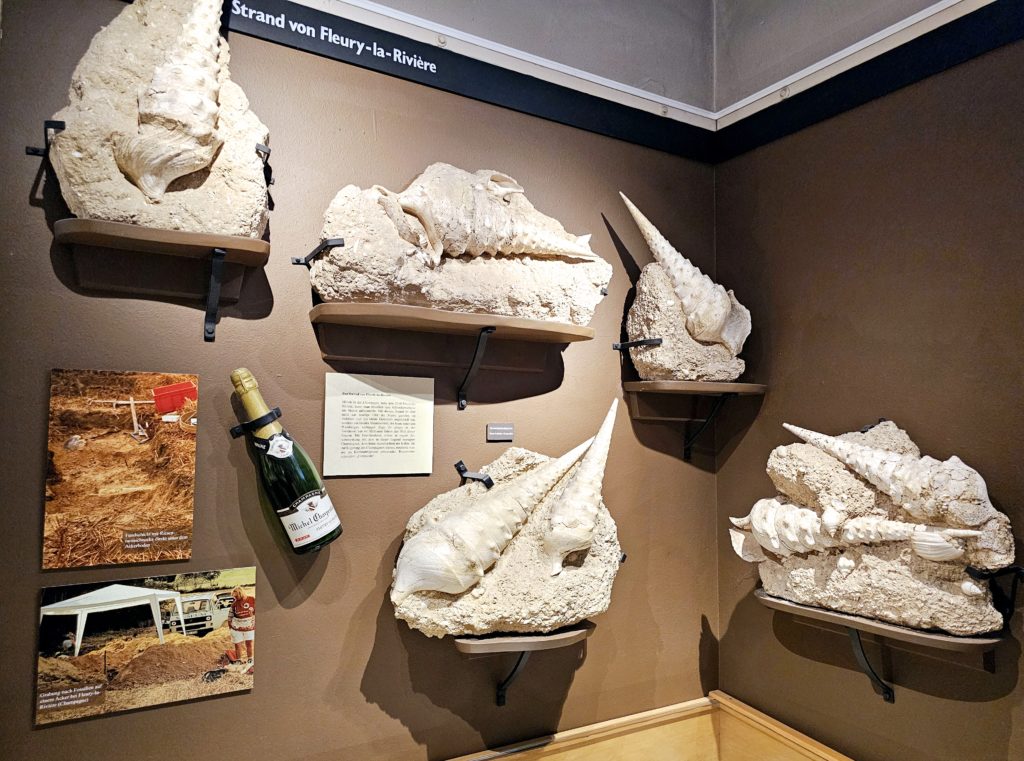
Another of the entertainingly written information boards asks: Can you see impact craters here? No, they are raindrops in the mud, fossilized and preserved for eternity. A corner further on: Why is there a champagne bottle hanging here between huge snail shells? It stands for the habitat of the giant snail "Campanile", whose shape is reminiscent of a church steeple. In the French region of Champagne, this species came to light during work on the cellars for maturing the noble drink. Finds have also been made in other countries - from the Czech Republic to Scandinavia.
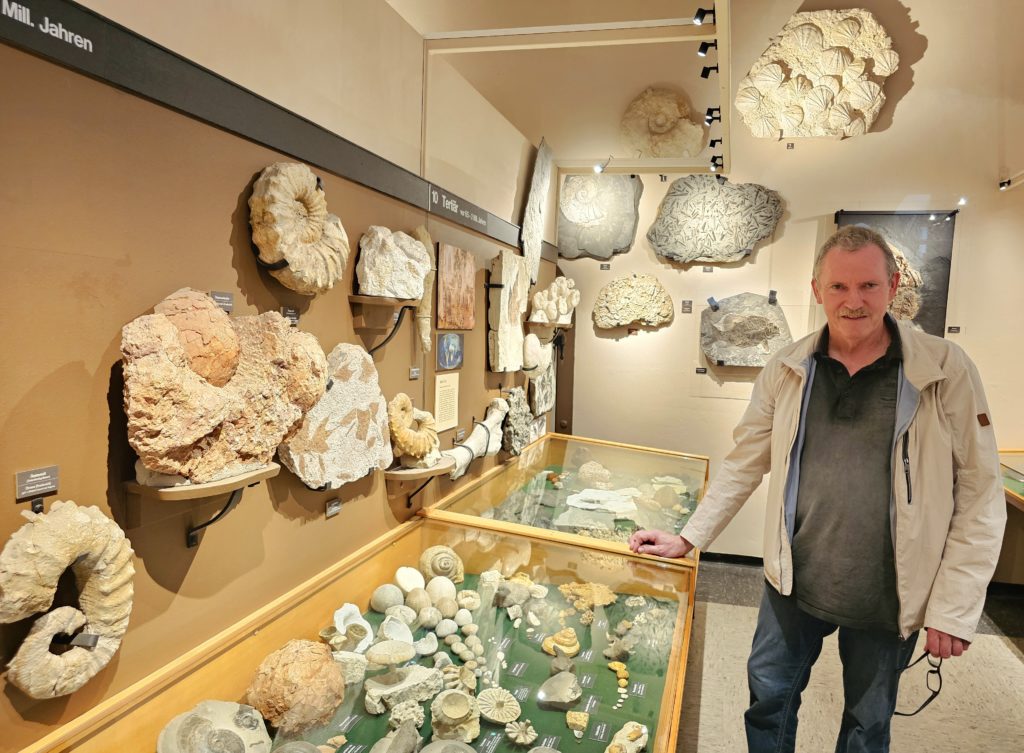
What does the red dot mean? Not "sold" as in a gallery, but "first description of this species". Harald Stapf tells another story: "We go 'digging' ourselves in pits that are currently being excavated. We first found the horseshoe crab near Kulmbach in Franconia with the help of the excavator driver Pochankei." Its scientific name is "Franconiolimus pochankei holotype", analogous to the place of discovery and supporter. The founder of the museum, amateur palaeontologist Arnulf Stapf, was also honored in this way: the three-centimeter mayfly "Arnulfias stapfi" bears his name.
What are children particularly interested in? Dinos, of course. So their favorite exhibits undoubtedly include the fossilized dinosaur tracks and the eggs of the prehistoric lizards.
Opening hours: Sundays 11 am to 4 pm and by appointment, free admission. The digital 360° panorama tour gives you an impression:
https://museum-nierstein.de
The wheel is turned here: In the Rheinhessen Bicycle Museum in Gau-Algesheim
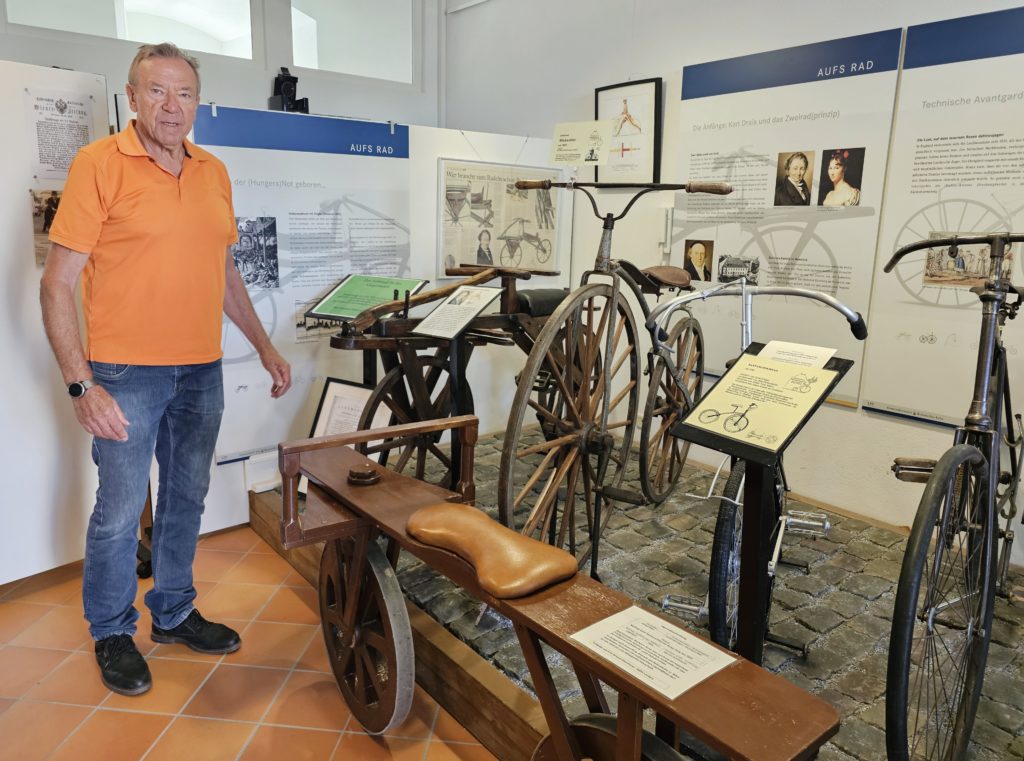
Of course, a bicycle museum focuses on bicycles of all kinds: for women, men, children, for everyday use and sport, historical and electric. Even for people who are less interested in technical details, the approximately 80 exhibits in five rooms at Ardeck Castle in Gau-Algesheim exciting insights: How have ingenuity and the quest for improvement driven the development of the "most widespread, sustainable and environmentally friendly means of personal transportation"? How is it used in sport? How has it inspired art? The motto is "grasp to grasp": Visitors should actively experience and everyone is allowed to turn the wheel.
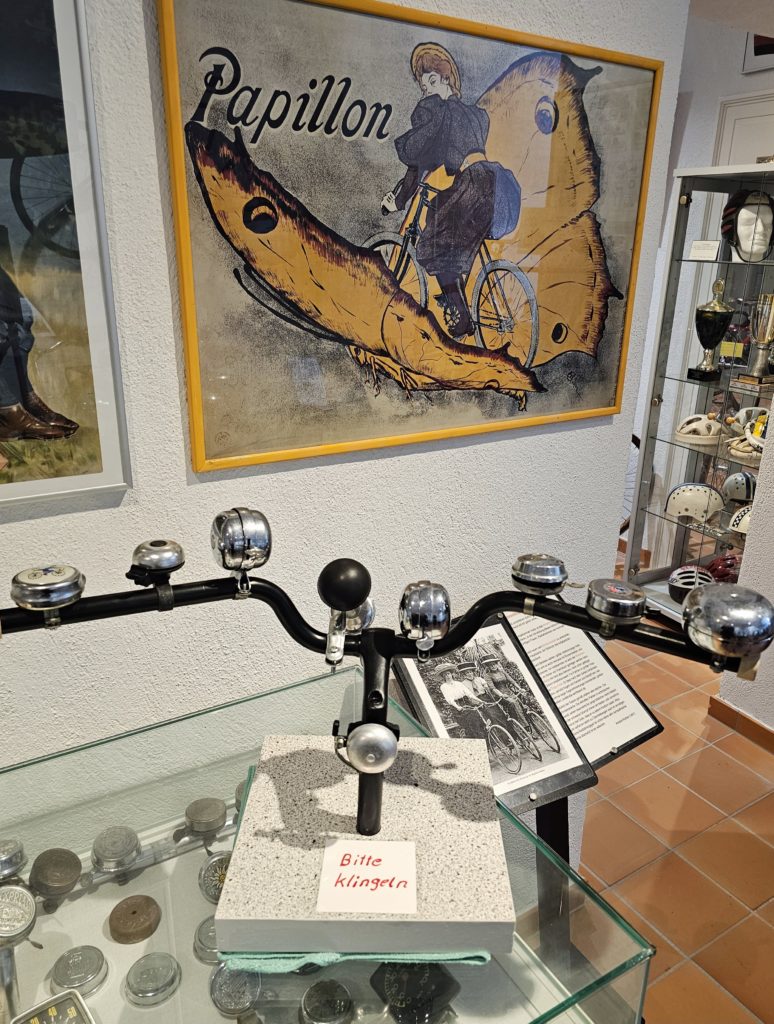
The history is fascinating: it all started at the beginning of the 19th century with walking machines called draisines. With these, the rider's own feet moved forward by walking on the ground. This was quickly followed by innovations to the handlebars, pedals, frame and wheels. The generation of penny-farthings with oversized front wheels led to many head-over-heels accidents. Inventors therefore came up with the safety bike with solid rubber tires of the same size. "Many types were only built for a short time until there was modernization," explains museum director Emil Busch.
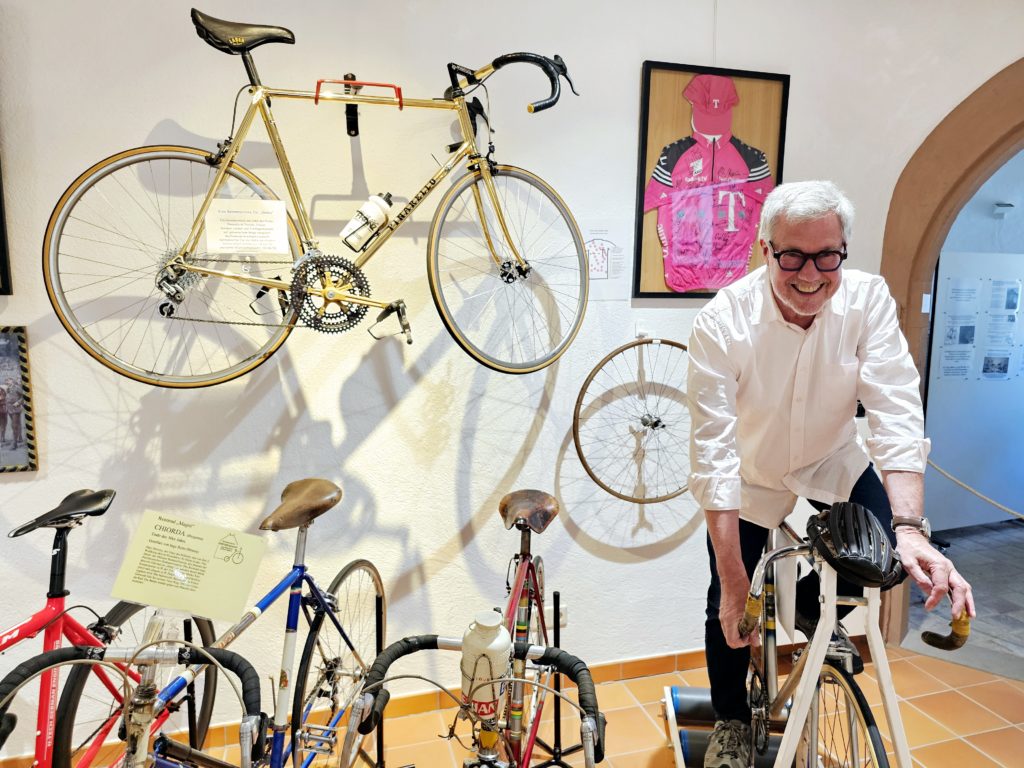
"We are a regional cycling and cycling museum, because it's also about cycling, which is particularly widespread in Rheinhessen," he explains. An entire room is dedicated to this area: videos illustrate the almost acrobatic feats performed by artistic cyclists. On the walls hang jerseys worn by Rudi Altig and Jan Ulrich at the Tour de France - ennobled with their autographs. You can even get a feel for track racing by getting on the single speed bike. In the display case next to it are rackets and balls from lesser-known sports such as cycling polo. An information board tells of "battle-whispering, glory-hungry Amazons". At the end of the 19th century, women who had the courage to take part in cycling races against all prohibitions were denigrated in this way.
The prints on the walls of another room show that rolling wheels inspired art. The work by the German-American painter Lyonel Feininger is entitled "Radrennen" ("Cycle Race") and "Endspurt" ("Final Spurt") by the Japanese artist Tatsuo Taki. The bull's head made of saddle and handlebars is inspired by Picasso. In the middle of the room is another example of how people solve problems: Scotsman Bickerton wanted to use his bike in central London. However, it was forbidden to take bikes on the subway. So he invented a bike that had nothing welded to it. He was then able to transport this first folding bike in history in a reduced size in a bag on the subway.
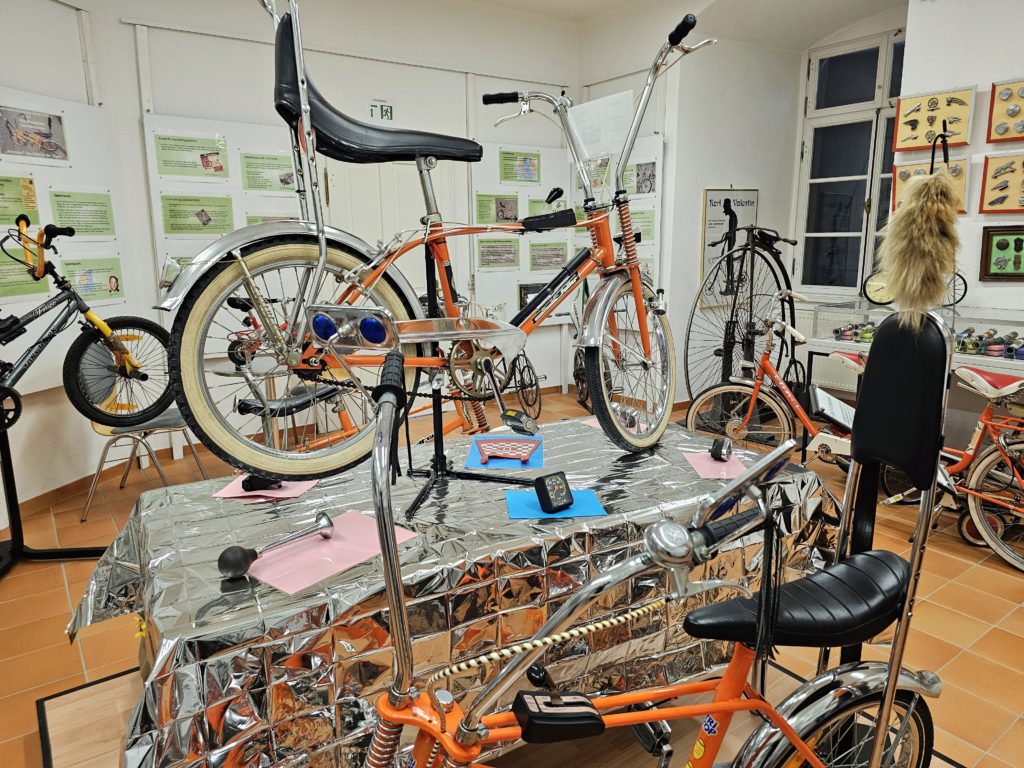
The special exhibition revolves around a cult object: the Bonanza bicycle with a banana saddle and high "deer antler" handlebars. It is actually called a high-riser, because the Paper Boys in the USA invented it - so that the deliverers could load more newspapers. Only in this country was the popular TV western series with Little Joe the namesake. A video in the museum shows what tricks are possible with it - jumps like a skateboard.
There are special guided tours and workshops for children with hands-on activities, quizzes and tasks that also focus on safety.
By the way: the museum is located various cycle paths such as the fruit route. Not far away is also the predicate hiking trail Hiwweltour Bismarck Tower over.
Opening hours: Every year from Easter Sunday to the second weekend in October, on Sundays and public holidays from 14:00 to 18:00, or by arrangement, admission free. Lots of information on: www.fahrradmuseum-rheinhessen.de
Mighty marionettes and filigree figures: Museum for Puppet Theater Culture Bad Kreuznach
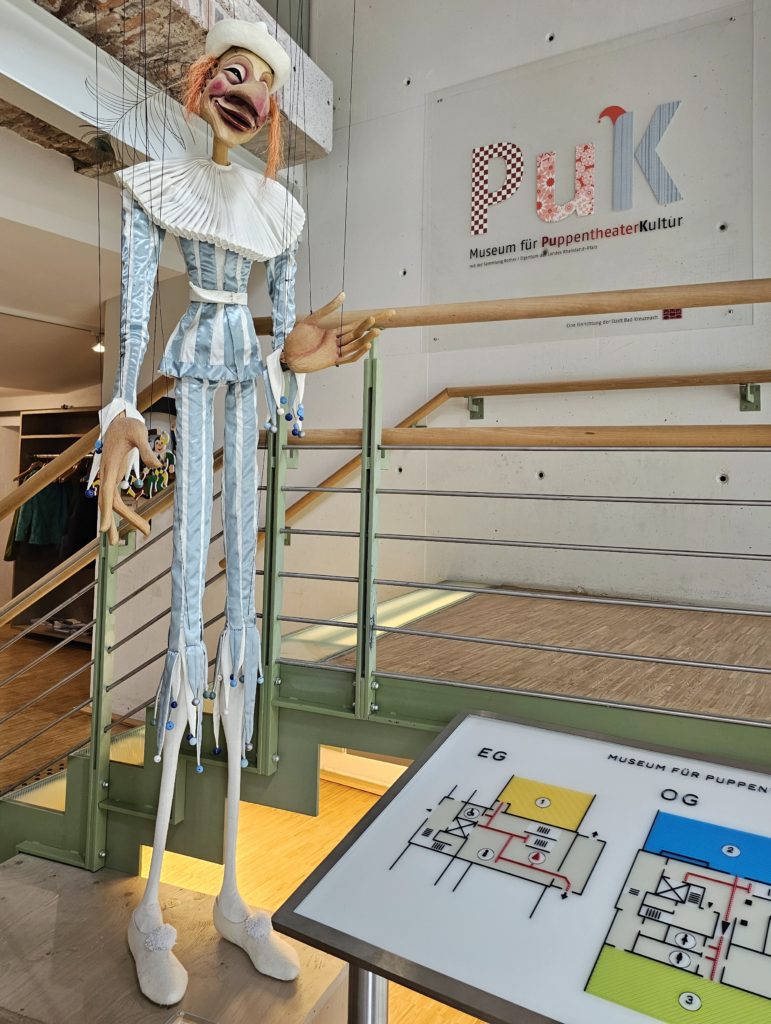
Kaspar, Seppl, Käpt'n Blaubär and Hein Blöd or the characters from the Augsburger Puppenkiste: In the Museum of Puppet Theater CultureThe stars made of wood and fabric make an appearance at the PuK exhibition in Bad Kreuznach. Visitors can get close to childhood favorites, take a look behind the scenes and learn exciting stories. In the entrance area, Pukinello greets visitors larger than life and lanky, a special production for the tenth anniversary of the museum. Like many other things in the museum, the figure also stands for a record: it is the largest marionette that can be played by a single person.
The exhibits on the upper floor show that there was a long way to go before it became an art form in its own right on the theater stage and on television. Puppet theater began as popular entertainment at fairs and in inns. The puppeteers were a traveling people, eyed with suspicion by the population, who even hung white flags on their caravans as a sign of their integrity. At first they played from their coats, then they carried the puppet box on their backs as a "stage house". This became the "theater out of a suitcase". It was not until 1900 that the first permanent theater was built in Munich.
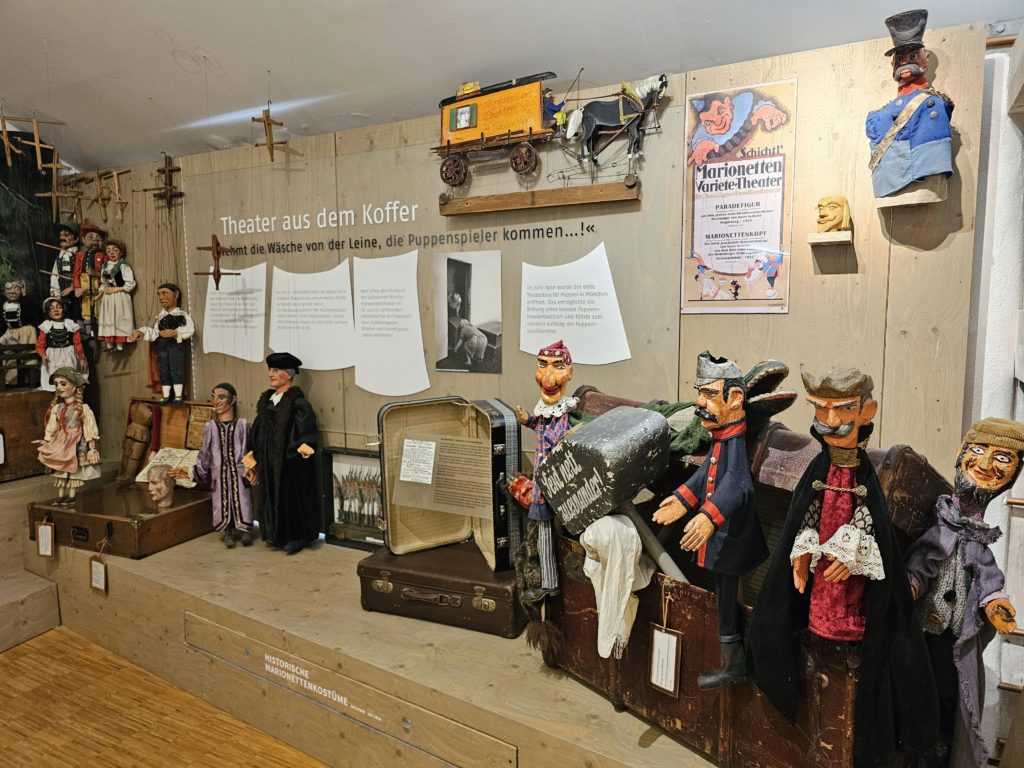
The many rod and shadow puppets, stick puppets and marionettes - sometimes with funny, sometimes with demonic facial expressions - show just how multifaceted the stage stars are. "From wooden block to wooden head" required the highest level of craftsmanship. This can be seen in the workshop of carver Till de Kock and his wife Hilde. Time and again there were further developments: A special feature as one of the few talking dolls is the grandma from Stuttgart. In the museum, all you have to do is press a button and she starts talking in Swabian. Another press of the button makes her start knitting.
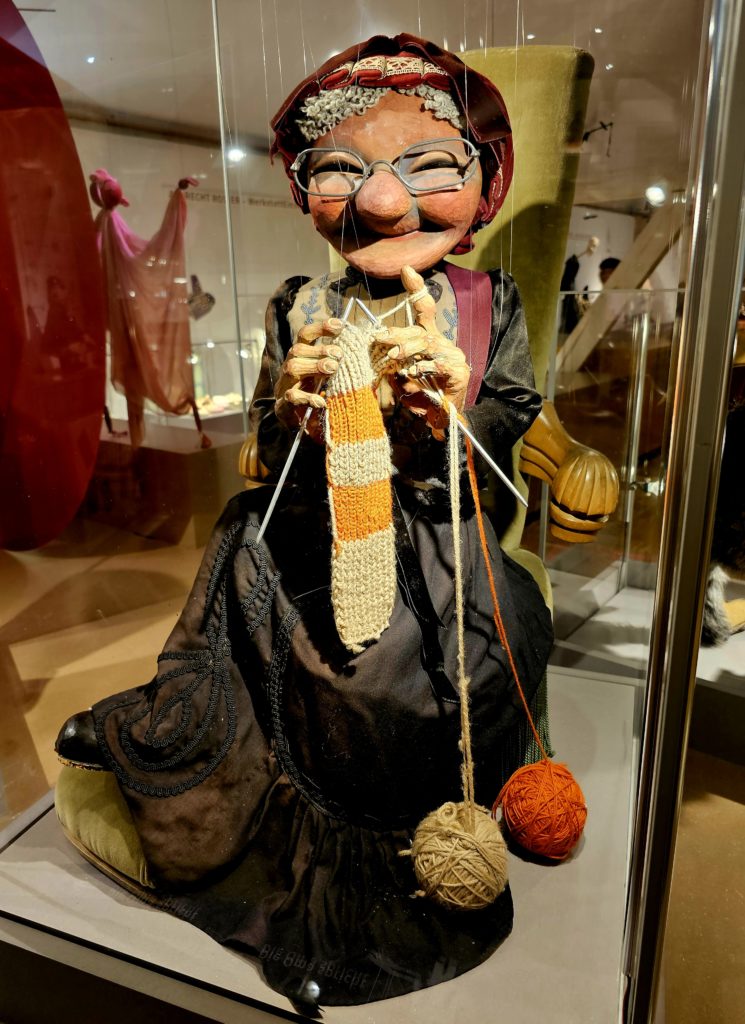
For example, visitors can pick up a figure of the Hohnsteiner Kaspar, who is considered a pioneer of television puppets. And a little further on, you can go on a journey yourself in the virtual Fliewatüüt. In 1972, the children's TV series "Robbi, Tobbi and the Fliewatüüt" told the story of a resourceful boy and his robot friend who invent a flying vehicle and set off on an adventure.
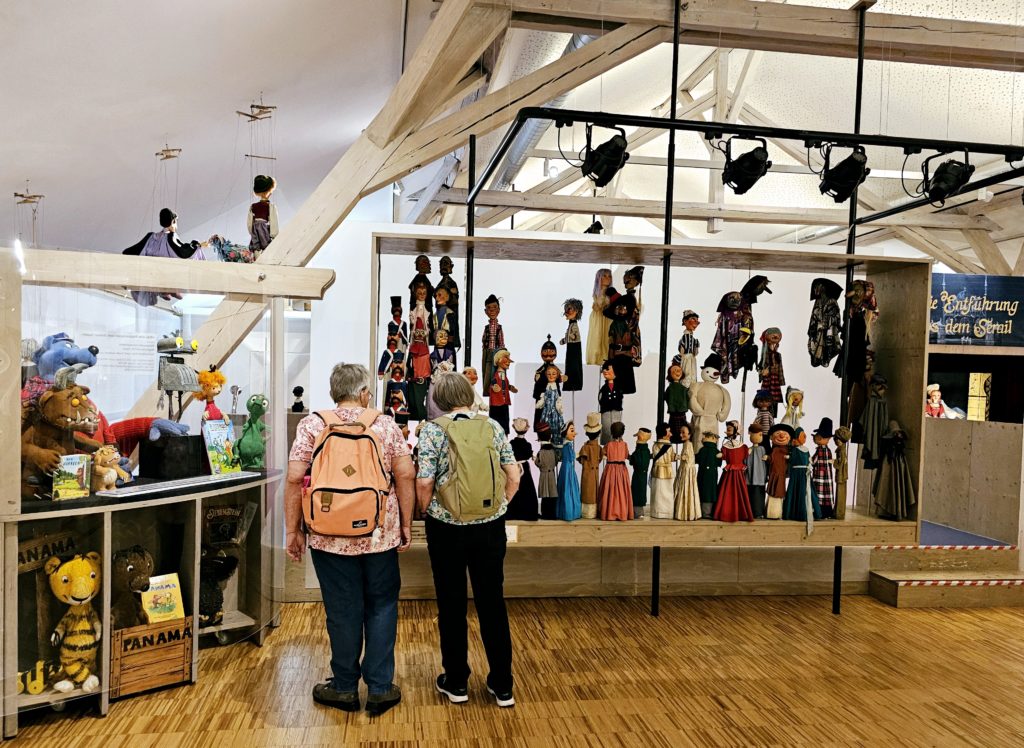
This makes the museum fun for children too: touch dolls here, listen to audios there and get active at play stations. Red pointed hats show where this is welcome. An information leaflet specially developed for young visitors invites them to take part in a museum rally. There are guided tours for children and workshops where youngsters can build figures like Pinocchio themselves. Once a month on PuK Theater Sunday for families, the curtain rises for two performances in the main hall.
Adults also experience many aha moments. Museum employee Katrin Keber points to a pair of shoes with extra thick platform soles. The puppeteers wore these so that they could play the tall figures better. The view of the wider world is also exciting: in Vietnam, puppetry floats, the Bunraku figures from Japan have a special eye mechanism and in Indonesia, Wayang shadow puppets drive away ghosts and demons. UNESCO has even recognized eight puppetry traditions as "Intangible Cultural Heritage".
The special exhibition "Pippi Longstocking, Pettersson and Mama Moo" takes you to Villa Kunterbunt and Taka-Tuka Land. Here, everything revolves around the cult characters of Swedish children's literature. Once again, there is plenty to look at and stories to listen to by Astrid Lindgren and co. And: there is Pippi's horse - currently the most photographed object in the museum, as Katrin Keber explains with a grin.
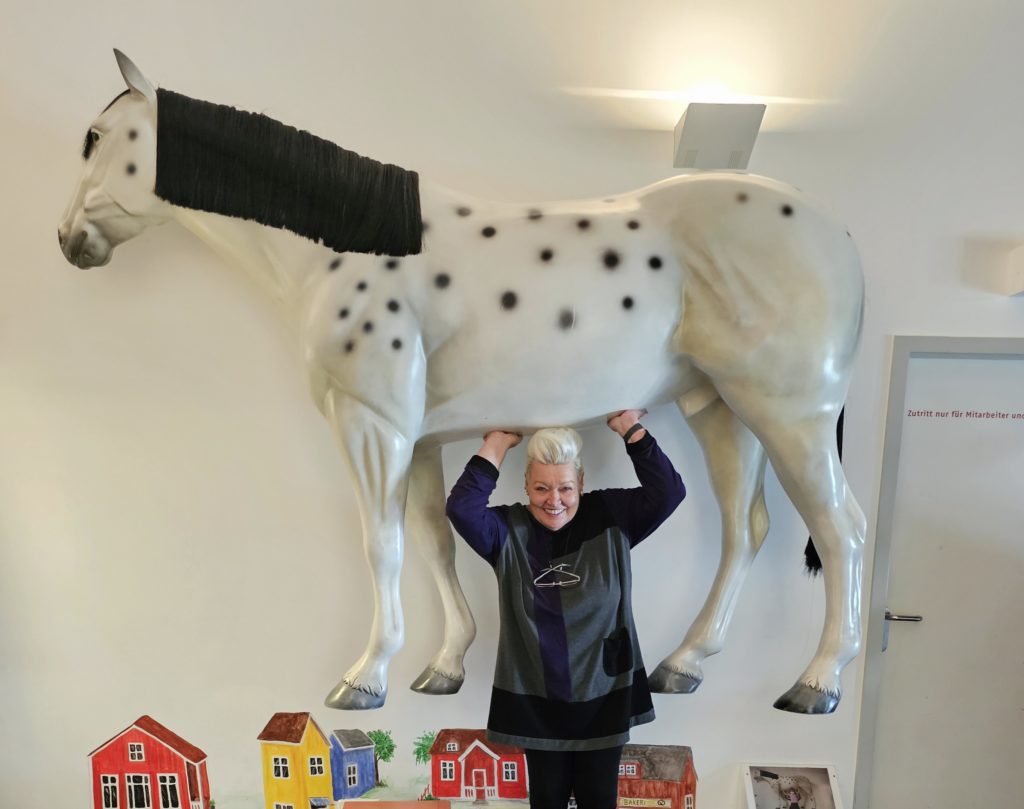
More information, opening hours and admission prices: Museum for Puppet Theater Culture (PuK) | City of Bad Kreuznach (bad-kreuznach.de)
The combined ticket, which also includes the Römerhalle and Schloßpark museums, is an attractive option.

